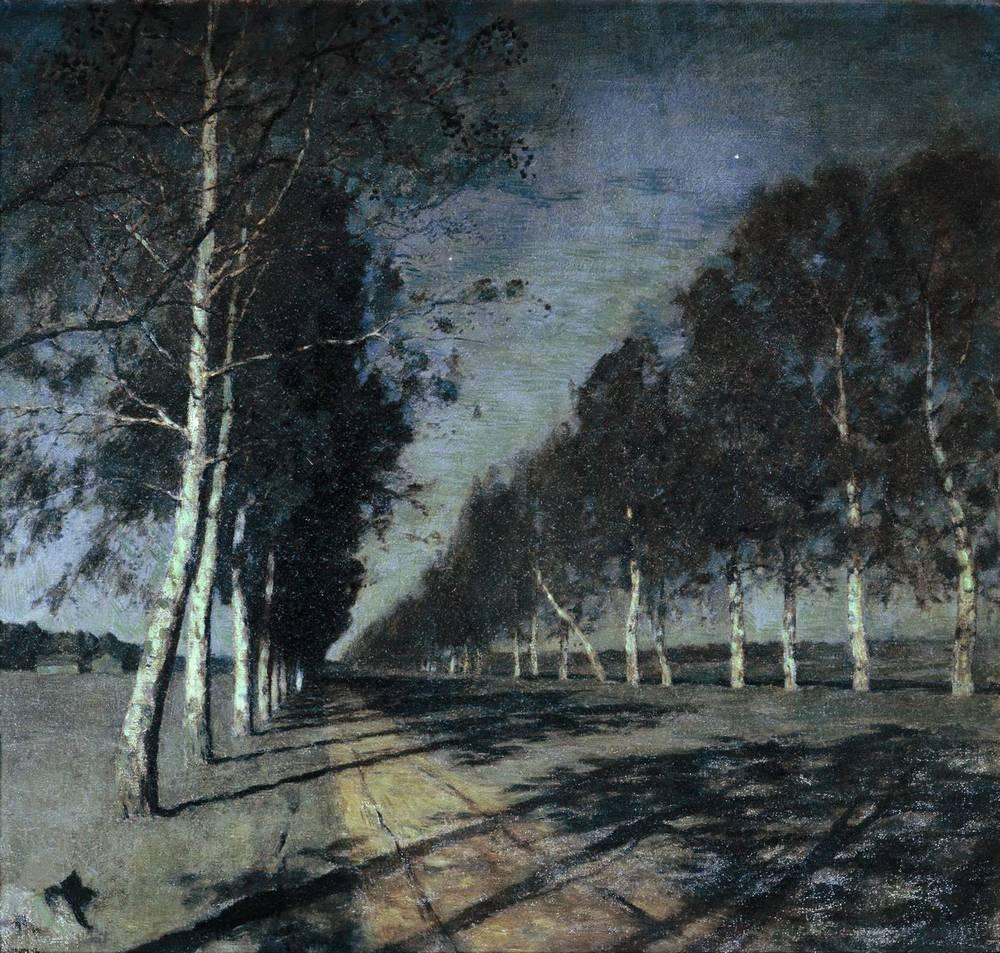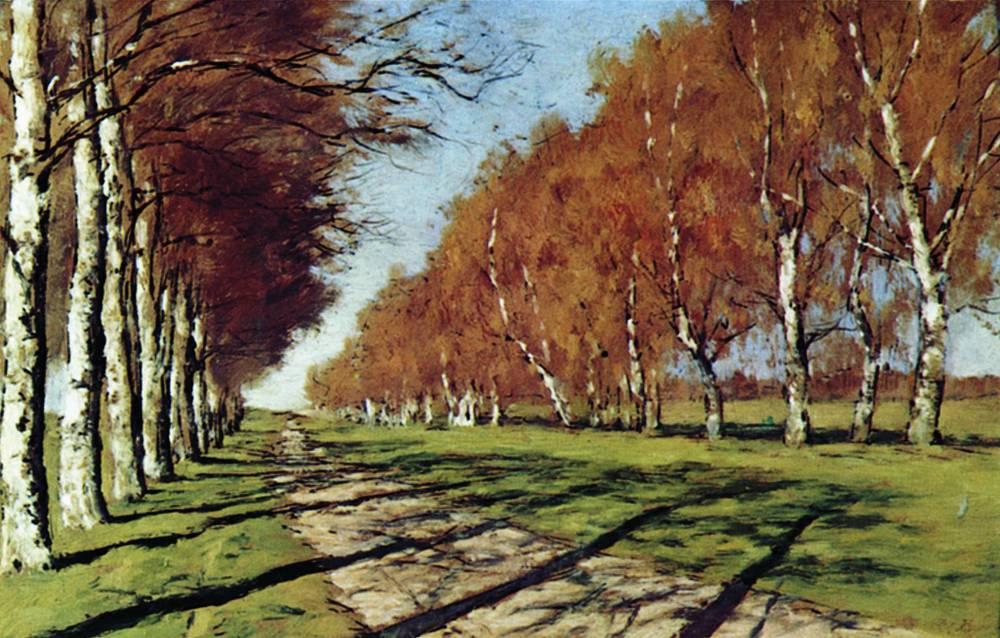I have wonder how the painters without today's technology painted their nocturne paintings. From what I recall, Whistler would go out at night and made drawings and mental notes of his subject, and finish the final nocturne painting in the studio, likely during the day time hours. But he was a tonalist, who took great liberty in colours, so this approach seems very natural.
For someone like Levitan, I was less sure. He made 2 paintings of what seems to be the same road, and even the same trees, 9 years apart according to wiki art. If the dates are true then that's quite puzzling as he did the night painting FIRST!
 |
| Moonlit Night: A Village - 1888 - Isaac Levitan |
 |
| Big road. Sunny autumn day - 1897 - Isaac Levitan |
For the second painting, 9 years later, did he revisit the spot? or did he paint it based on the first painting?
It would make a lot of sense to me if he did the sunny painting first, and then later turned it into the nocturne, as the other way around sounds quite unusual.
No comments:
Post a Comment